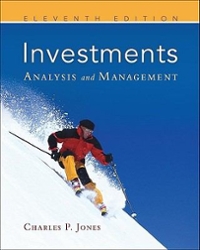Question
CDO stands for Collateralized debt obligation, and before the financial meltdown of 2008, hardly any nonspecialists were familiar with this arcane acronym. A CDO is
CDO stands for Collateralized debt obligation, and before the financial meltdown of 2008, hardly any nonspecialists were familiar with this arcane acronym. A CDO is a collection of individual debts (for example, home mortgages) that are bundled together in one investment pool. That pool can then be divided into different sections (or tranches), representing different degrees of risk, and sold to investors. An individual lender, such as a credit card company, may put together a CDO, or an investment firm may create a CDO from a package of loans from different lenders. Although abused during the housing bubble, CDOs perform a useful economic function. They allow lenders to focus on loan origination and investors to buy interest-earning securities.*
What serves no obvious economic function, however, are so-called synthetic CDOs, which represent a bet on the performance of a package of loans owned by others. For example, Goldman Sachs brokered a synthetic CDO, known as Abacus-2007 AC1, based on the performance of a group of subprime loans. But unlike a normal CDO, a synthetic like Abacus contains no actual bonds or mortgage loans; it merely references assets owned by other people. As with other synthetic CDOs, one side of the option was betting that the value of a bundle of assets (owned by other people) would rise; the other side of the option was betting that it would fall. In principle, its no different from wagering on the Yankees against the Dodgers or on a cricket fight. With a synthetic CDO, its a pure bet, says Erik F. Gering, a former securities lawyer and now a law professor at the University of New Mexico. It is hard to see what the social value is.
In the two years before the financial meltdown of 2008, over $100 billion in synthetic CDOs were issued, and everyone agrees that, by increasing the instability of the system, they were an important factor in that crisis. Moreover, their use represents a shift in the culture of investment banks from a focus on finding the most productive allocation of savings to an emphasis on maximizing profit through proprietary trading and arranging casino-like wagers for market participants. For these reasons, many business writers and financial experts are critical of synthetic CDOs and other purely speculative derivatives, believing that they should be severely limited or even prohibited. However, companies such as Goldman Sachs and others make $20 billion a year putting them together, and these firms lobbied strongly and successfully to see that the financial reform bill of 2010 didnt significantly restrict them. In their defense, one industry insider says, I believe that synthetic CDOs have a very useful purpose in facilitating the management of risk. Such instruments facilitate the flow of capital.
But it is difficult for even the heartiest champion of synthetic CDOs to defend the Abacus-2007 AC1 deal with a straight face. Goldman Sachs put it together for hedge fund tycoon John Paulson based on a group of lousy mortgage loans that he had selected for the sole purpose of betting that their value would go down. As with any synthetic CDO, of course, Goldman Sachs needed to find investors who would take the opposite position, which it didthe two largest being ABN Amro and IKB Deutsche Industriebankand it was paid $15 million for closing the deal. Those companies, however, were not told that Paulson was betting against them nor that he had selected the underlying subprime mortgages only because he believed they were sure to lose value. And, sure enough, Abacus-2007 AC1 soon produced a $1.5 billion loss for ABN and an $840 million loss for IKBbut a $1 billion gain for Paulson.
Goldman Sachss defenders say that ABN and IKB were sophisticated investors who should have known what they were doing and that who is on the other side of a CDO is not something that is routinely disclosed. So perhaps ABN and IKB deserved what they gotafter all, one might argue, they had no real business undertaking a synthetic CDO as opposed to underwriting or insuring actual subprime loans. But, still, its hard to square Goldman Sachss treatment of them with the principle displayed on the companys website: Our clients interests always come first.
Goldman Sachs, of course, is not the only financial institution to manipulate its customers. The Securities and Exchange Commission has accused Citigroup, for example, of putting together a package of mortgage-backed securities without telling investors that it was betting against themthat the fund was designed to fail. When it did, Citi earned $160 million while its investors lost $700 million. On the other hand, spread across the country are thousands of small community banks and not-for-profit credit unions. Believing that their job is to serve the community, they often take a personal interest in their customers, making loans to local businesses, lending small sums to individuals who have fallen into financial trouble, or bending over backwards to help those who cant keep up their mortgage payments. They support you personally, says one customer. Customers can walk in and talk to the president, adds another, and know he isnt sucking in their money and betting against them on proprietary securities.*
A synthetic CDO is an example of unethical challenge in this case using Kant's ethics.
Step by Step Solution
There are 3 Steps involved in it
Step: 1

Get Instant Access to Expert-Tailored Solutions
See step-by-step solutions with expert insights and AI powered tools for academic success
Step: 2

Step: 3

Ace Your Homework with AI
Get the answers you need in no time with our AI-driven, step-by-step assistance
Get Started


